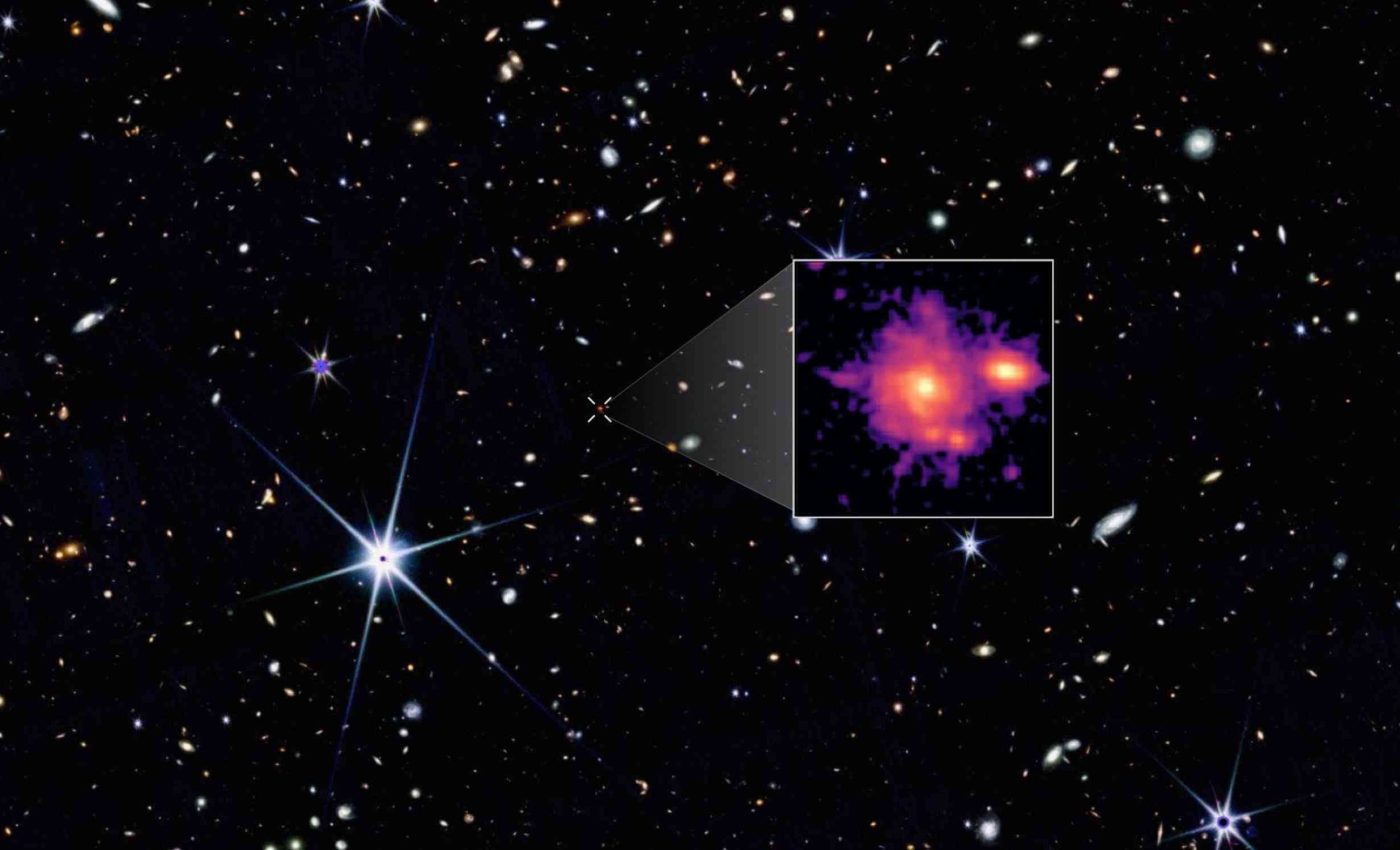
Astronomers find a spiral galaxy like the Milky Way that is much older than it should be
Astronomers using the James Webb Space Telescope (JWST) found a fully formed spiral galaxy, Zhúlóng, at redshift 5.2, meaning its light left only one billion years after the Big Bang.
At that epoch the Universe was about seven percent of its current age, yet the galaxy already shows a dense stellar bulge, sweeping spiral arms more than 62,000 light‑years across, and a mass on par with the Milky Way.
Christina Williams of NSF NOIRLab, who co‑leads the PANORAMIC survey that reports the object, explained that wide-area surveys are essential for identifying rare, massive galaxies.
Snapshot of the Zhúlóng galaxy
Zhúlóng’s starlight travelled roughly 12.5 billion years before reaching JWST, offering an unprecedented look at spiral structure.
The image reveals a compact, reddish core wrapped by bluish arms where younger stars reside, a pattern typical of mature disks but unprecedented so soon after cosmic dawn.
At redshift 5.2 the cosmic baryon density was sixty‑three times today’s average, according to Planck cosmological parameters.
In such a crowded environment frequent mergers tend to shred orderly disks, which is why theorists long assumed grand‑design spirals would emerge only after several billion years. Zhúlóng breaks that timetable.
Why spiral galaxy arms matter
Spiral arms trace density waves that trigger new stars and help funnel gas toward the central bulge, sculpting a galaxy’s long‑term growth.
Finding well‑defined arms so early implies the physical processes that calm turbulent gas and establish stable disks must act faster than models predicted.
With a stellar mass of about one hundred billion suns, Zhúlóng converted roughly thirty percent of its available baryons into stars, one and a half times the peak efficiency inferred for later galaxies.
Such efficiency stretches standard limits on how quickly gas can cool and collapse inside dark‑matter halos, echoing concerns raised by analyses that compare early Webb finds with ΛCDM expectations.
Despite its size, the galaxy forms stars at about sixty‑solar‑masses per year, placing it half a dex below the star‑forming main sequence extrapolated.
That subdued star formation rate suggests the system is already ramping down while still young.
Rethinking galaxy evolution models
Across cosmic time, the typical relation between stellar mass and star formation bends for hefty systems.
The Zhúlóng galaxy offers a high‑redshift anchor for that curvature, hinting that internal processes such as bulge growth and gas stabilization start acting earlier than surveys of smaller fields have shown.
Future spectroscopy with JWST and ALMA will probe the galaxy’s rotation curve, gas content, and possible clumpy companions to determine whether smooth accretion, rapid mergers, or both built this unlikely spiral so quickly.
What spiral arms can teach us
The presence of spiral arms in Zhúlóng isn’t just a visual surprise, it hints at how matter behaves under gravity in the early Universe.
These arms likely trace density waves that compress gas and trigger new star formation, a process well understood in nearby galaxies but still being tested in extreme conditions.
Detecting such symmetry this early pushes theorists to refine their models of galactic disk stability, especially in chaotic environments where frequent mergers were expected to dominate.
Spiral structure may emerge faster or survive longer than once thought, and Webb will keep testing those boundaries.
JWST and the Zhúlóng galaxy
Zhúlóng was discovered through an observing technique called pure parallel mode, where one camera aboard the Webb Telescope captures additional images while the main instrument is focused elsewhere.
This approach squeezes extra science out of every telescope pointing, even during unrelated observations.
The PANORAMIC survey used this method to gather deep images across wide patches of sky, increasing the odds of finding rare galaxies like Zhúlóng.
That strategy worked, this Milky Way‑like spiral was spotted not in a planned deep field, but in a serendipitous patch captured during unrelated observations.
What we learned
Before Webb, most galaxies seen at such high redshift looked chaotic, clumps of star-forming gas or merging blobs rather than orderly spirals. That fit well with models predicting messy, turbulent early growth.
Now, with Zhúlóng and a handful of others showing mature shapes at extreme distances, astronomers must reconsider when and how cosmic order emerged.
If spiral disks can stabilize and grow within a billion years, then the earliest galaxies were organizing far faster than expected.
The study is published in Astronomy & Astrophysics.
Image credit: NASA/CSA/ESA, M. Xiao (University of Geneva), G. Brammer (Niels Bohr Institute), Dawn JWST Archive.
—–
Like what you read? Subscribe to our newsletter for engaging articles, exclusive content, and the latest updates.
Check us out on EarthSnap, a free app brought to you by Eric Ralls and Earth.com.
—–













